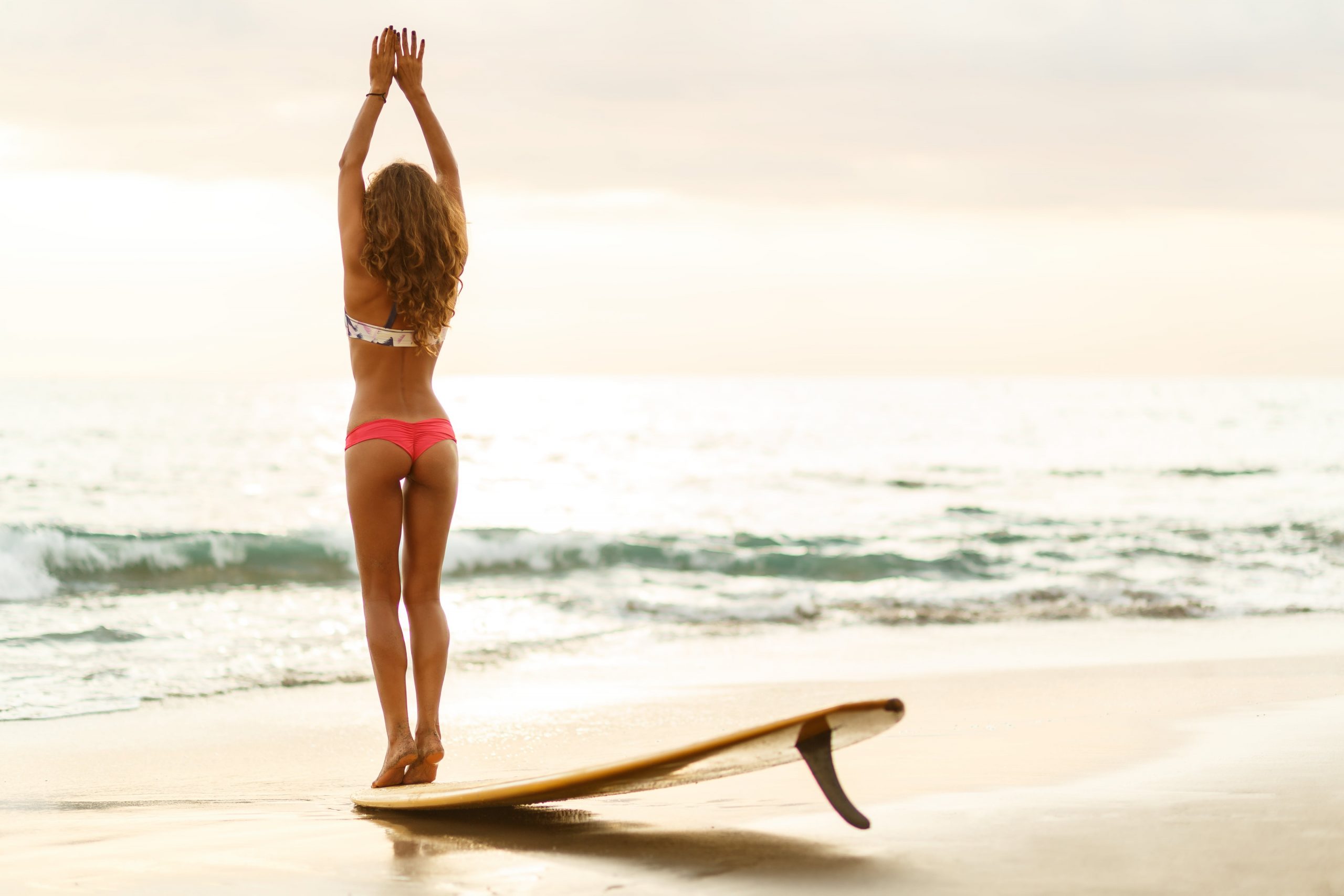
Surfing and Yoga Go Hand in Hand
Let’s take a moment to reconnect to our breath. Inhale deeply through your nose. Fill your lungs down to their very tips. Let your ribcage expand to where it feels as if it might open and take flight like a seafaring yellow butterfly. Slowly exhale through your mouth. Take another deep breath and feel the fresh air swirling like the wind down into your diaphragm, causing your chest and belly to rise like the tide. Let this ebb of air slowly flow out through your nose as you slightly constrict your throat. Take notice of your breathing sounds to understand why this so-called ujjayi breath in yoga is also known as the ocean breath.
The audible hush of ujjayi breathing is undeniably similar to the sound of the salty fingers that claw the seashore as each wave reaches its end, and then retracts to be reborn again. Our breath is as powerful as the waves we surf, and it is this sea-sounding breath — our pranayama — that helps us to create balance on the earth and in the sea.
There is a certain flow and meditative mindset that many surfers seek when they paddle out. There is this understanding that the ocean demands the attention of the present mind. In complying, which takes practice as any yogi also knows, a sort of enlightened moment might occur. This time-stands-still, one-with-the-wave moment slips into the past as you move forward on the wave.
You can ride the waves, but you can’t catch them. And there is something beautiful, and I daresay spiritual, in this fleeting attempt to be one with something so wild and unruly.
Mental and physical preparedness
The practice of yoga can help us prepare for these attempts on a mental and physical level. Between the practice of present-mindedness, pranayama, strength and balance building, and promoting a flexible mind and body, yoga is the perfect complement to surfing. Yoga can also teach us to be calm and clear-headed despite the charged and chaotic energy that generates the swells we chase.
Surfing is also an incredibly demanding sport. Surfers need core, shoulder, back and leg strength, stamina and breath-control. The lower back, hips, shoulders and neck are vulnerable to overexertion, stiffness and injury from surfing. And if we want to be able to surf for the better part of our lives, we need counter stretching and movement to balance out the demands we place on our physical selves in the sea. This is yoga.
Both surfing and yoga require practice, patience, and perseverance. They both need us to be here and in the now. The strength you acquire from surfing will surely show in yoga postures that utilize shoulder and spine strength. And the balance you build from postures like eagle or tree pose will definitely translate to better balance on your surfboard. The back-and-forth benefits of each are immense.
Surfing and yoga are Google buzz words certain to yield a lot of results that include “Costa Rica.” Costa Rica has become globally synonymous with both. And in more recent times, it has become synonymous with retreats that include both surfing and yoga. That’s because, let’s face it, yoga and surfing go together like rice and beans, and they do so effortlessly in Costa Rica.
Nosara and Santa Teresa have become the main hubs of these highly sought-after surf and yoga retreats. Those two hot spots, as well as Montezuma and Playa Grande, attract like-minded participants from otherwise diverse backgrounds around the world.
Surf and yoga retreats create a unique space to share days that include daily movement, time spent in nature, healthy eating, rest, reflection, learning and friendships that might not happen otherwise. They create the opportunity to experience firsthand how these two practices and ways of life balance and enhance one another — like yin and yang.
